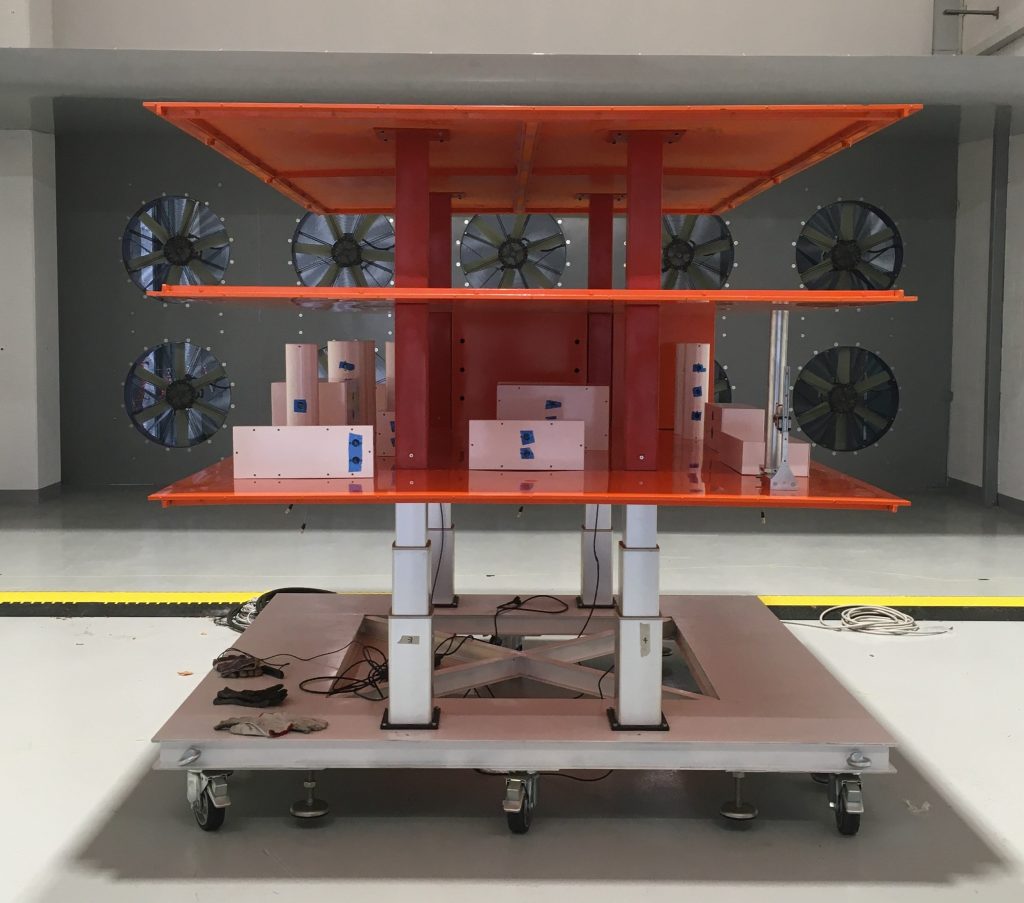The SEASTAR-WT can be used for testing equipment and prototypes that normally operate in an atmospheric wind flow.
The facility is available for those who wish to exploit its features.
Ideas and requests will be welcomed by the SEASTAR-WT Technical Advisory Board that will address any specific issue.
Simulation of high pressure gas releases on an offshore Oil&Gas platform

The first experiment hosted the SEASTAR-WT has been the validation of an innovative computational approach to predict the dispersion of natural gas after an accidental release on an offshore platform.
Click here to download a poster about the approach.
The tests have been performed on a 1:10 scaled mock up (overall dimensions 3mx2m in plant and 2,5 m high).
The natural gas to be used on the platform has been supplied via a dedicated supply line installed into the Wind Tunnel.
The facility has the possibility of storing several pressure vessels and tanks just outside the Tunnel.
The tests were managed by a proprietary software installed in the control room PCs.
This allows a remote control of the release that, involving hazardous gases, cannot be operated by personnel in the test room.
The control room is provided with a window that allows easy visual control of the ongoing tests.
The test room hosts a customised high pressure gas supply line with fixed and flexible connections up to the mock-up.
The mock-up is equipped with gas concentrations and velocity sensors: all the sensors hard wired with the control room.
New activities are coming!
In 2024 the SEASTAR-WT will host new tests using the same mock-up but modified to be compliant with hydrogen requirements. Read more here.
Other suggestions of the SEASTAR-WT exploitation
Drones stability in wind streams, mini, micro or scaled wind towers, atmospheric dispersion of pollutants and smog in urban environment, suitably scaled but making the most of the generous dimensions of the test chamber, are just a few examples of possible applications of the SEASTAR-WT.